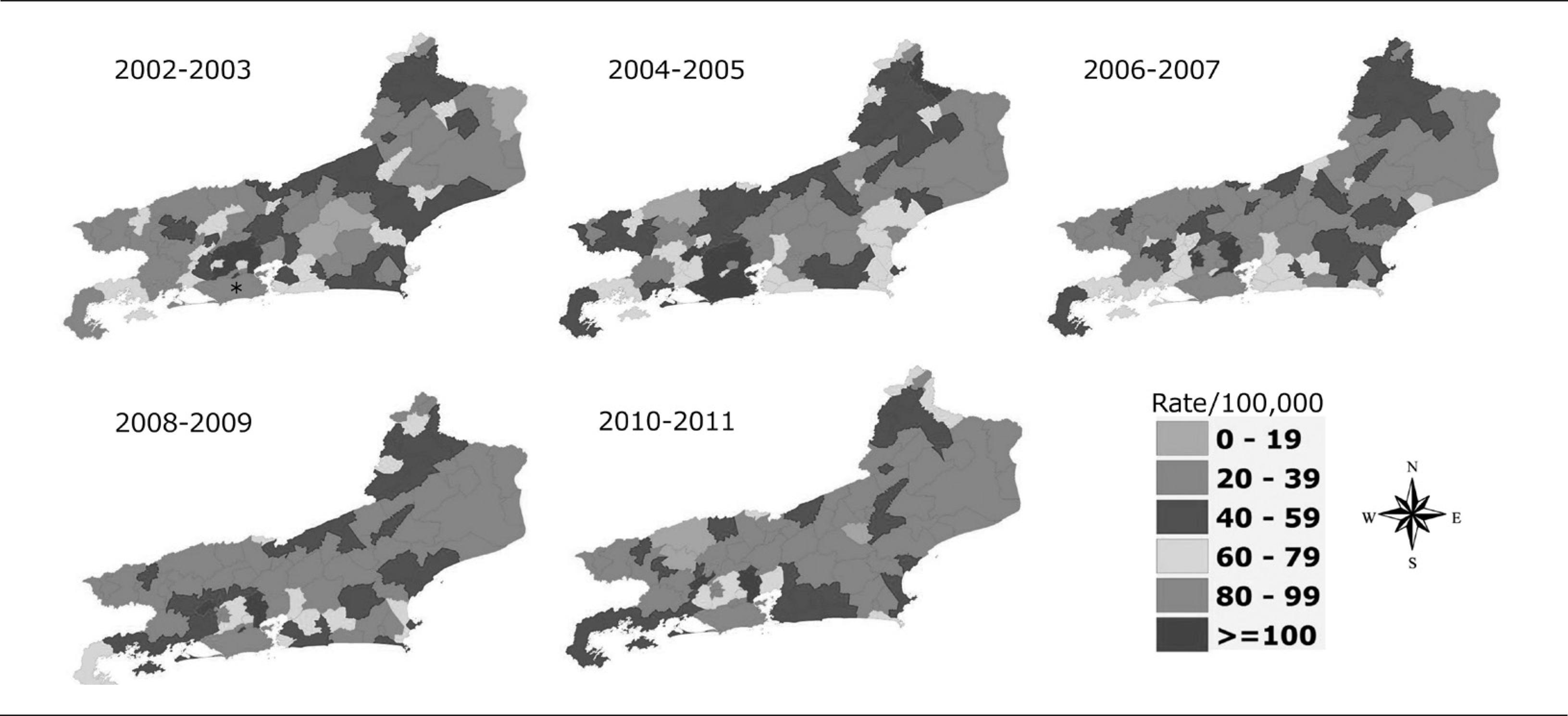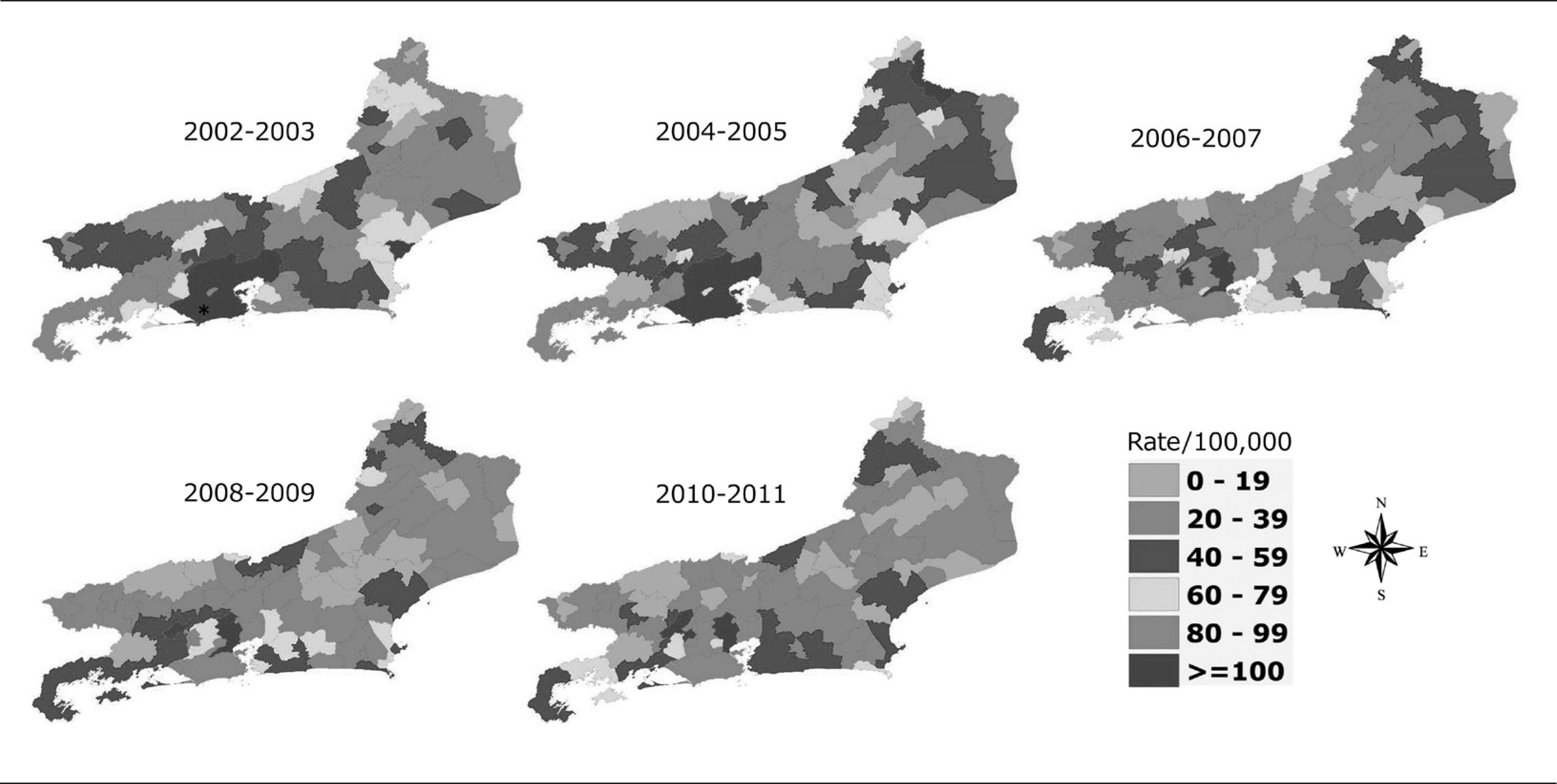Abstract
The aim of this study was to analyze the spatial distribution of the tuberculosis endemic in Rio de Janeiro State from 2002 to 2011. A retrospective study was conducted in the state of Rio de Janeiro from 2002 to 2011. Spatial analysis techniques were used to describe the distribution of tuberculosis incidence in the state. Multilevel Poisson regression model was used to access the relationship of tuberculosis and the following factors: “sex”, “age-group” and “diagnostic year” (individual-level factors). Demographic density and municipality were also included in the model as contextual-level factors. A reduction in endemic tuberculosis was observed over the years. The highest incidence rates were concentrated on the south coast of the state, covering Rio de Janeiro City (capital) and neighboring cities. We detected a significant clustering of high TB incidence rates on the south coast of the state and a cluster of low incidence in the northeastern region of state. The risk of tuberculosis was higher in early 2000s, in males and in 40-59 age group. Metropolitan regions are important risk areas for the spread of tuberculosis. These findings could be used to plan control measures according to the characteristics of each region.
Key words
Tuberculosis; Spatial analysis; Incidence; Epidemiology; Multilevel analysis



